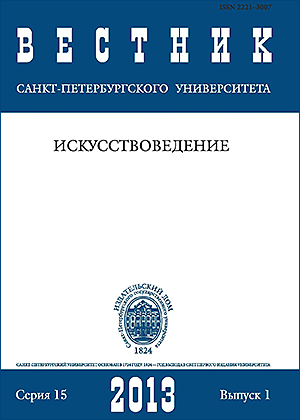Structural thinking and polyvalence principle in the European musical composition of the last third of the XX century in the context of Gilles Deleuze’s “The Logic of Sense”
Abstract
The article represents a tentative analysis of semantic units in a sentence and structural units in composition of new music. The ratio of surplus and lack of structural thinking represents a paradox, which is very characteristic for new music and its composition structure. The article identifies three levels of interactions. The first is a pre-composite level: generating initial “matrix” of composition, an overall idea, which determines all other levels of composition. The second is a multiserial structure with complex interrelation of various aspects of musical material in compositions of “new complexity”. And the third level is Organizing a whole Temporary grid [Zeitnetz] of H. Lachenmann’s — an extended succession of serially permuted and rhythmic sounds which carry out functions of the abstract indexes fixing the introduction or “switching off ” of various sound sets, culmination zones and etc. The treatise by Gilles Deleuze “Logic of sense” and the statement of composers about structuring musical composition becomes a main concern of the article.
Keywords:
structure, polyvalence
Downloads
References
References
Downloads
Published
How to Cite
Issue
Section
License
Articles of "Vestnik of Saint Petersburg University. Arts" are open access distributed under the terms of the License Agreement with Saint Petersburg State University, which permits to the authors unrestricted distribution and self-archiving free of charge.






